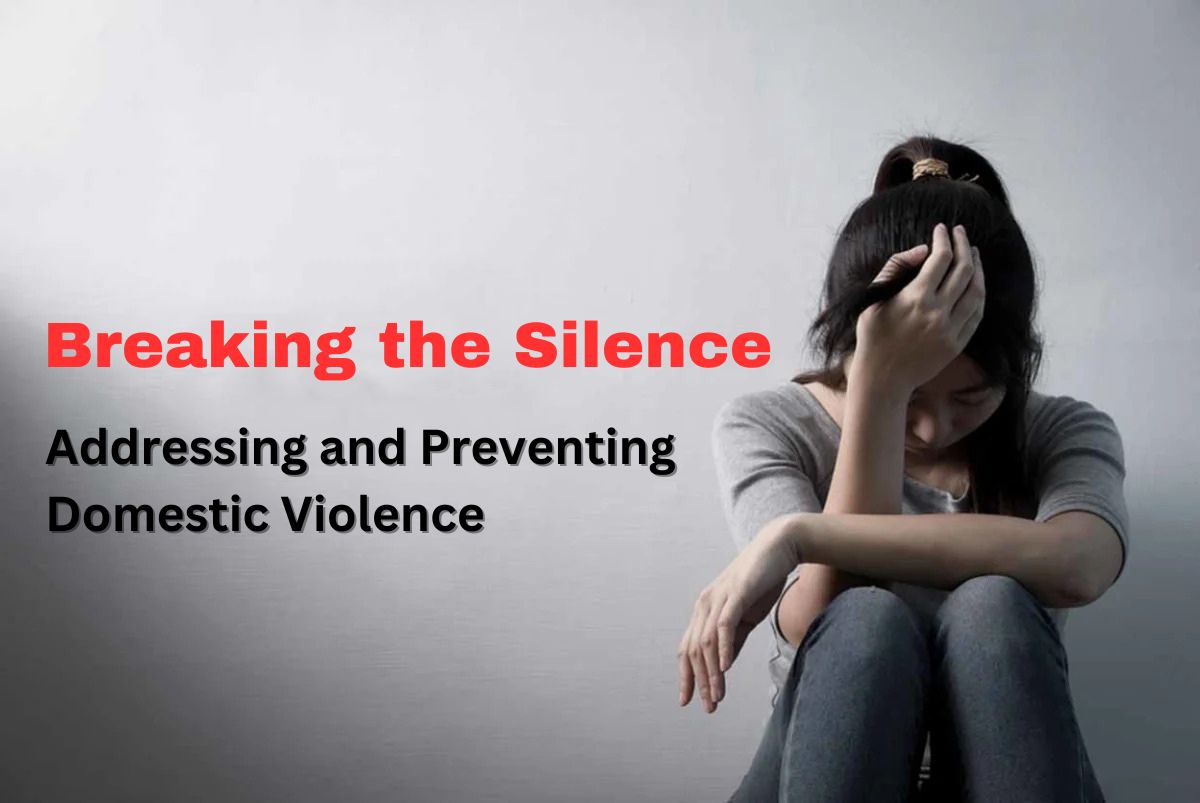
Breaking the Silence: Addressing and Preventing Domestic Violence

Breaking the Silence: Addressing and Preventing Domestic Violence
Domestic violence is a widespread problem that affects people of different ethnicities, ages, and socioeconomic backgrounds. Every day, it grows in silence and wreaks havoc on the lives of many victims. It’s time to break the silence and bring this crucial topic to light. We can make our society safer and more humane by addressing and preventing domestic violence.
Let us first understand what is domestic violence
Domestic violence includes a wide spectrum of abusive actions, such as physical, emotional, sexual, and financial exploitation. It happens in close relationships, families, and households. Domestic abuse victims frequently suffer long-term physical and psychological injury, stuck in a cycle of fear, isolation, and powerlessness. Domestic abuse knows no boundaries; it affects people of all genders, ethnicities, ages, and origins. To successfully address this issue, we first need to understand its complexity and core causes.
Take a step forward and speak about domestic abuse
Breaking the silence surrounding domestic abuse is one of the most important steps in tackling it. Victims frequently suffer in silence, fearful of being judged, blamed, or subjected to further suffering. We can offer victims the assistance and resources they need to leave abusive situations if we promote an environment in which victims are encouraged to speak up and seek help. Raising awareness through community campaigns, education programs, and media activities to question cultural practices that perpetuate violence and victim-blaming is part of this.
Through education, we can overcome this evil cause
Domestic violence prevention relies heavily on education. We can help develop a culture of respect and nonviolence by supporting healthy relationships, consent, empathy, and gender equality from a young age. Comprehensive programs that teach students about healthy boundaries, conflict resolution, and bystander intervention can be implemented in schools, colleges, and community organizations. Furthermore, offering tools and training to professionals in disciplines such as healthcare, law enforcement, and social work can assist them in identifying indicators of domestic abuse and providing appropriate support.
Support the survivors:
Supporting domestic abuse survivors is critical for their rehabilitation and empowerment. It is critical to provide safe spaces, like shelters and helplines, where survivors can receive counseling, legal aid, and other crucial services. To provide a coordinated response to domestic abuse situations, collaboration with local organizations, municipalities, and law enforcement agencies is also required. It is also critical to push for stronger laws and regulations that protect victims, holds criminals accountable, and give survivors long-term support on their road to recovery.
Breaking the silence on domestic violence requires collective action and a commitment to creating a society that prioritizes safety, equality, and empathy. By addressing and preventing domestic violence, we can build a future where everyone can live free from fear and violence.
Recognizing the enormity of the situation, Geetanjali Care, a non-profit organization, has been working tirelessly to address the issue of domestic violence by educating women on the need to keep themselves safe and they should be aware of their rights. The team at Geetanjali Care, a non-government organization, has dedicated itself to organizing regular workshops and seminars, as well as supporting women in need. Remember, when you protect a woman, you protect the community.
